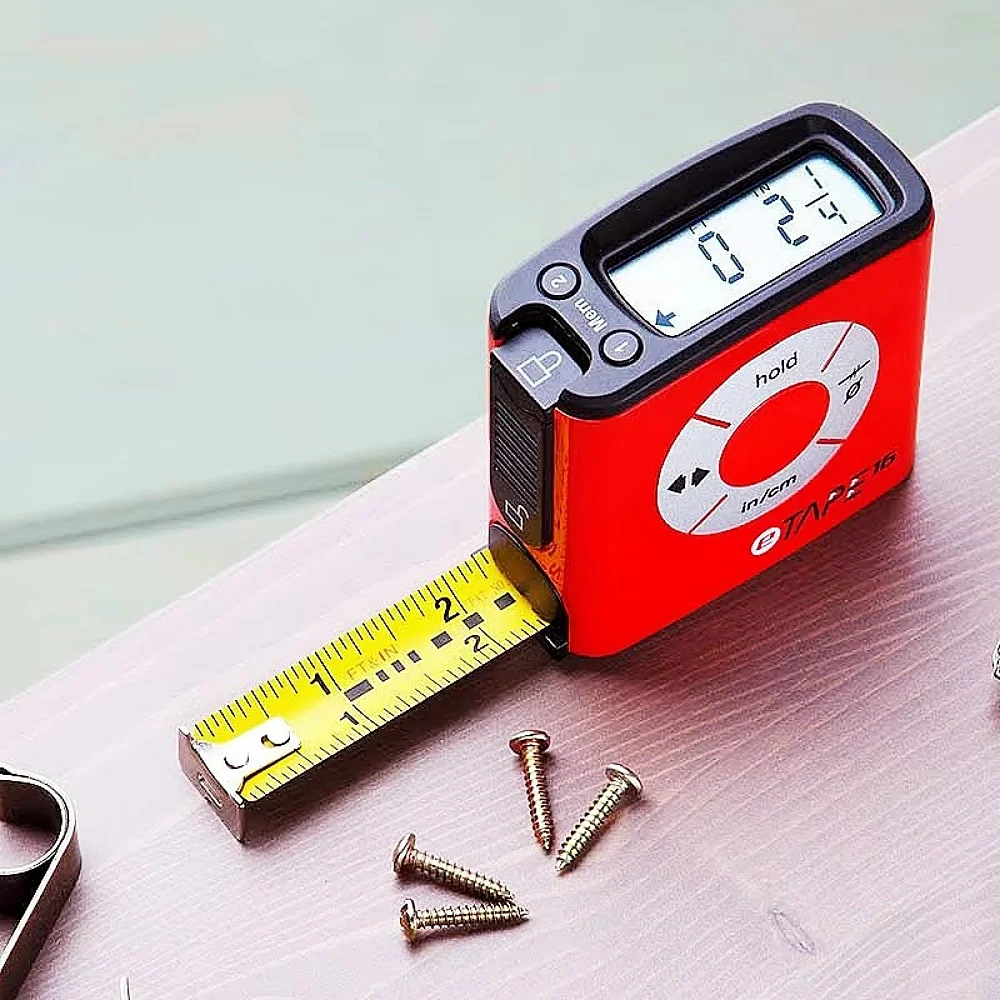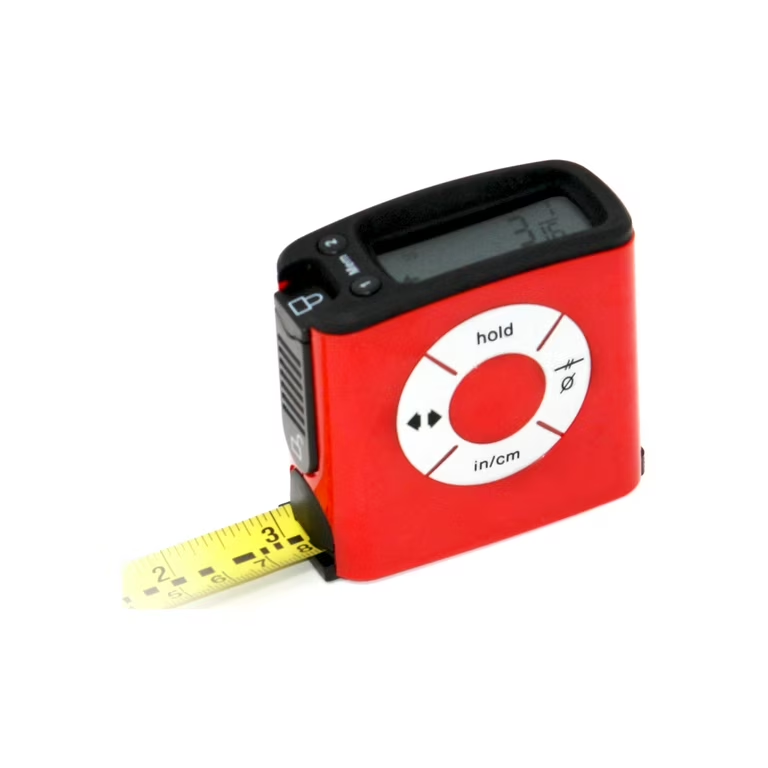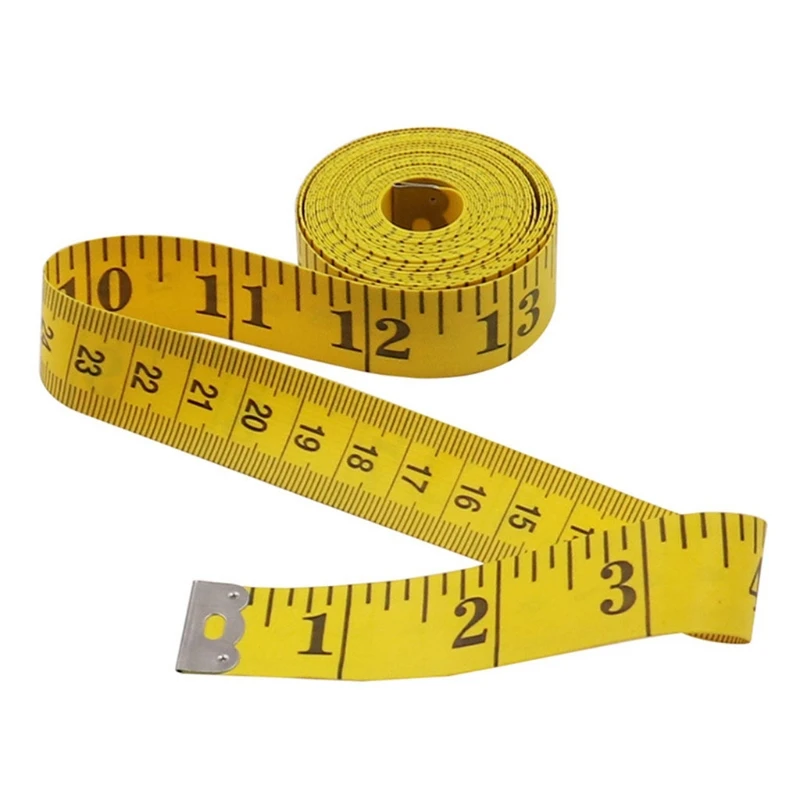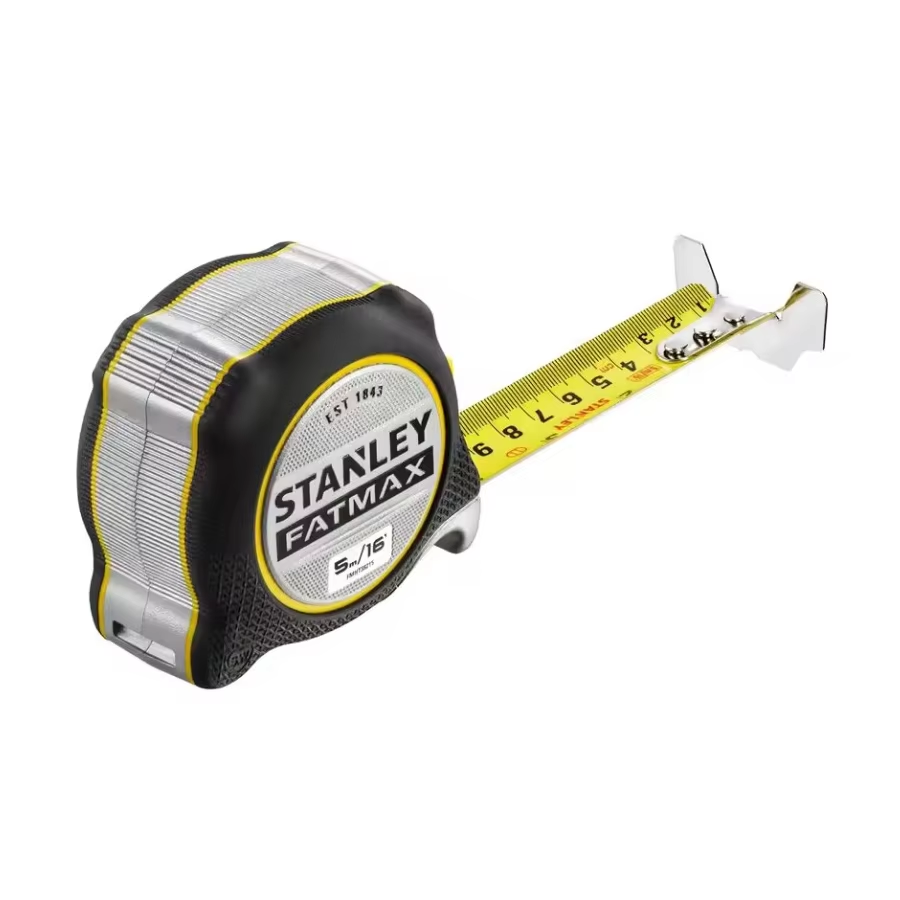
Why 1/16 on a Tape Measure Matters for Carpentry and Crafting
When you hold a tape measure in your hand, every small mark plays a crucial role in achieving precise measurements. Among these, the 1/16 on a tape measure is a fundamental unit that contributes significantly to accuracy in various tasks. Whether you’re a professional carpenter, a DIY enthusiast, or simply someone who values precision, understanding the importance and application of the 1/16 mark can enhance your measurement skills. This article delves into the significance of the 1/16 on a tape measure, exploring its uses, benefits, and tips for accurate measurement.
 The Significance of 1/16 on a Tape Measure
The Significance of 1/16 on a Tape Measure
The 1/16 mark on a tape measure represents one-sixteenth of an inch, a small yet vital division that allows for fine-tuned measurements. This level of precision is essential in tasks where even the slightest deviation can impact the outcome.
Why 1/16 Inches Matter
In many projects, especially those involving woodworking, metalworking, or sewing, precision is paramount. Here’s why the 1/16 inch mark is important:
- Accuracy: Ensures measurements are exact, reducing errors in cutting or fitting materials.
- Detail Work: Facilitates intricate tasks that require precise alignment and spacing.
- Consistency: Promotes uniformity across multiple measurements, essential for scalable projects.
By paying attention to the 1/16 inch marks, you can achieve greater control and finesse in your work.
Practical Applications
The 1/16 mark is not just a minor division; it has numerous practical applications across various fields. Let’s explore some key areas where this precision plays a crucial role.
Carpentry and Woodworking
In carpentry, measurements need to be precise to ensure that joints fit perfectly and structures are stable. Here’s how the 1/16 inch mark is utilized:
- Joint Accuracy: Ensures that dovetail joints, mortise and tenon joints, and other connections are cut accurately.
- Trim and Molding: Helps in measuring and cutting trim pieces to exact lengths, ensuring a seamless fit.
- Cabinet Making: Facilitates precise spacing and alignment of shelves, doors, and drawers.
Sewing and Tailoring
For those in the fashion industry or hobbyists alike, precision in measurements is key to creating well-fitted garments. The 1/16 inch mark aids in:
- Fabric Cutting: Ensures fabric pieces are cut to exact dimensions, preventing wastage and ensuring uniformity.
- Pattern Making: Allows for detailed pattern adjustments, essential for creating intricate designs.
- Seam Allowances: Helps in maintaining consistent seam widths, ensuring professional-looking finishes.
Home Improvement Projects
From hanging pictures to installing fixtures, many home improvement tasks require precise measurements. The 1/16 inch mark assists in:
- Tile Installation: Ensures tiles are spaced evenly, providing a uniform appearance.
- Flooring: Helps in measuring planks or tiles accurately, reducing gaps and overlaps.
- Fixture Placement: Aids in the precise placement of electrical outlets, switches, and lighting fixtures.
Metalworking and Engineering
In metalworking and engineering, tolerance levels are often tight, making the 1/16 inch mark indispensable for:
- Machining Components: Ensures parts are cut and assembled with exact dimensions, critical for machinery functionality.
- Blueprint Interpretation: Facilitates accurate reading and implementation of detailed engineering drawings.
- Prototype Development: Allows for precise adjustments during the development of prototypes, enhancing product quality.
Basics of a Tape Measure
Understanding how a tape measure works is essential for accurate measurements. Tape measures are versatile tools used in various tasks, from construction to crafting. They offer convenience and precision for measuring lengths and distances.
Key Components of a Tape Measure
- Blade: The long metal or fabric strip marked with measurement units. It retracts into the case when not in use.
- Hook or End Tab: Located at the blade’s tip, it helps you grip the edge of the object being measured.
- Lock Mechanism: Stops the blade from moving, holding it at the desired length.
- Housing: The case holding the blade, often made of durable materials like plastic or metal.
- Measurement Markings: Indicate units such as inches, centimeters, or fractions.
These parts work together to create a reliable tool for precise measurements.
Common Units Displayed on a Tape Measure
- Imperial Units: These include inches marked in fractions such as 1/16, 1/8, 1/4, and 1/2.
- Metric Units: Typically displayed in centimeters and millimeters for easier measurements in metric systems.
- Dual Units: Some tape measures feature both metric and imperial markings for added versatility.
Most tape measures show fractional increments clearly, allowing accurate readings like 1/16 on a tape measure. Understanding these units ensures you can measure lengths efficiently on any project.
Importance of Accurate Measurements
Accurate measurements are critical for successful projects and everyday tasks. Precision ensures proper fitting, functionality, and quality.
Applications of Precision in Daily Life
- Construction and Repairs: Builders rely on precise measurements for safe, sturdy structures.
- Crafting and DIY Projects: Crafters create tidy, professional designs with accurate dimensions.
- Cooking: Measuring ingredients correctly ensures tasty recipes and consistent results.
- Decorating: Precision ensures furniture arrangements and wall hangings look balanced and attractive.
- Clothing Design: Tailors use exact measurements for well-fitting garments and flawless styling.
These examples highlight how proper measurements improve outcomes and reduce errors.
Consequences of Measurement Errors
- Material Waste: Incorrect measurements lead to wasted resources like wood, fabric, and time.
- Structural Issues: Poor measurements may result in unstable or unsafe construction.
- Design Flaws: Errors cause mismatched parts or ineffective designs.
- Financial Loss: Fixing mistakes can increase costs and delay projects.
- Frustration: Errors in measurements make tasks harder and more time-consuming.
Avoiding these problems starts with mastering tools like a tape measure. Understanding fractions like 1/16 on a tape measure ensures better results and efficiency in any task.
 Understanding Fractions on a Tape Measure
Understanding Fractions on a Tape Measure
Fractions are key to reading measurements accurately on a tape measure. They represent smaller divisions of an inch and help provide precise readings. Learning how these fractions work is essential for tasks requiring accuracy, such as woodworking, crafting, and repairs.
Breakdown of Fractional Increments
- Dividing an Inch: Tape measures divide an inch into equal parts, typically halves, quarters, eighths, and sixteenths.
- 1/2 (Half Inch): The largest subdivision, commonly used for quick and rough measurements.
- 1/4 (Quarter Inch): A smaller division than 1/2, useful for intermediate-level precision.
- 1/8 (Eighth Inch): Represents half of 1/4 and is critical for more detailed work.
- 1/16 (Sixteenth Inch): The smallest standard increment on most tape measures, ideal for very detailed tasks.
Each of these fractions appears as a unique line on the tape measure blade. Smaller fractions have thinner or shorter lines compared to larger ones.
How 1/16 Fits into Fractional Markings
1/16 is the smallest incremental marking on standard tape measures. It divides each inch into 16 equal parts. These markings are spaced closely for detailed measurements. To identify 1/16 on your tape measure, look for the shortest lines between larger fractions. These tiny increments enable precise work for delicate or intricate projects, such as joining small parts or creating snug fits in crafting.
Step-by-Step Guide to Reading 1/16 on a Tape Measure
Reading 1/16 on a tape measure requires attention to detail and familiarity with fractional markings. This guide simplifies the process so you can quickly and accurately identify the smallest increments on your tape.
Identifying the 1/16 Mark
- Locate the Inch Mark: Start by finding the nearest whole inch on the tape.
- Divide the Space: Each inch is divided into 16 equal parts.
- Find the Shortest Lines: Look for closely spaced, short lines between larger fractional markings.
- Count Carefully: Starting from zero, count the incremental lines up to the 1/16 position.
- Confirm the Measurement: Double-check your reading to ensure accuracy.
The 1/16 mark is the shortest line within each inch segment. Careful observation is key to distinguishing it.
Distinguishing 1/16 from Other Increments
- Recognize Line Lengths: Shorter lines represent smaller measurements, such as 1/16 and 1/8.
- Compare Distances: 1/16 marks are halfway between 1/8 marks.
- Note Patterns: Larger fractions like 1/4 and 1/2 have longer, distinct markings.
- Practice Regularly: Repeated use of your tape measure helps improve recognition.
- Use a Reference: Keep an image of fractional markings as a visual guide.
Understanding the relative positions and sizes of lines ensures accurate identification of 1/16 on a tape measure. Practice these steps often for better precision in measurements.
Tips and Tricks for Accurate Reading
Mastering the ability to read 1/16 on a tape measure takes practice and focus. Employing specific tips and techniques can help refine your skills and ensure precision every time you measure.
Using Visual and Physical Guides
- Mark Reference Points: Use a marker to highlight the 1/16 lines for easier identification.
- Compare Line Lengths: Remember that the shortest lines mark 1/16 increments between longer fractions.
- Use a Magnifier: For detailed work, a magnifying glass can help distinguish small increments.
- Highlight Closest Fractions: Mark larger fractions (like 1/8 or 1/4) to navigate directly to 1/16.
- Adjust Lighting: Work under good lighting to make small fractional lines easier to see.
Visual and physical aids provide clarity and reduce errors in reading small fractions.
Practice Methods for Better Measurement Skills
- Repeat Simple Measuring Tasks: Measure and mark the same length multiple times for consistency.
- Test with Real Projects: Apply your skills in practical tasks like woodworking or crafting.
- Quiz Yourself: Use a blank tape measure diagram to practice recognizing 1/16 increments.
- Measure Different Objects: Try measuring various items to adapt to diverse situations.
- Seek Guidance: Learn through observation or tips from experienced craftsmen and builders.
Frequent practice will enhance your confidence and competence in identifying 1/16 on a tape measure.
 Troubleshooting Common Mistakes
Troubleshooting Common Mistakes
Understanding potential issues with reading 1/16 on a tape measure is crucial. By addressing common mistakes, you can ensure precise measurements and avoid frustration.
Misreading Fractions
Misreading fractions is a frequent challenge when using a tape measure. Fractions, especially 1/16, are small and can be tricky to identify. Here’s how to minimize errors:
- Study the Markings: Familiarize yourself with the layout of fractions on the tape measure.
- Use a Reference Guide: Keep a printed diagram of fractional divisions for quick comparison.
- Pay Attention to Line Lengths: Shorter lines represent smaller fractions like 1/16.
- Count Incrementally: Start at zero and count each line carefully to avoid skipping or doubling fractions.
- Practice Regularly: The more you use your tape measure, the easier it becomes to recognize fractions.
By implementing these steps, you will build confidence in distinguishing 1/16 from other increments.
Dealing with Worn or Faded Tape Markings
Over time, tape measures can wear down, making it hard to see fractional markings. This can lead to errors. Here are ways to handle this issue:
- Clean the Tape: Remove dirt and dust that may obscure markings.
- Enhance Faded Lines: Use a fine-tip marker to redraw worn-out markings.
- Replace Old Tape Measures: Invest in a new tape measure if the marks are too damaged.
- Use Supplemental Tools: Employ magnifiers to read faint markings on the blade.
- Store Properly: Keep your tape measure in a dry, safe place to prevent future wear.
Maintaining your tools ensures visibility and improved accuracy when reading 1/16 or other fractions. Taking these measures reduces errors and frustration during projects.
Advanced Measurement Techniques
Mastering advanced measurement techniques ensures accuracy, especially when working with small fractions like 1/16 on a tape measure. These methods can help improve precision and reduce errors.
Double-Checking and Verifying Your Readings
- Repeat Your Measurement: Measure the same object multiple times to confirm consistency.
- Cross-Check Lengths: Compare your reading with another measuring tool for accuracy.
- Check Against a Reference: Validate measurements using pre-measured standard lengths.
- Verify Fractional Marks: Recount increments to ensure you’ve identified the correct 1/16 mark.
- Ask for Assistance: If in doubt, have someone review your measurement.
Double-checking develops confidence and ensures your readings are reliable for any project.
Using Supplemental Tools for Enhanced Accuracy
- Use a Digital Caliper: Digital tools provide precise measurements for tiny increments like 1/16.
- Employ Measuring Apps: Apps can verify lengths as a secondary reference.
- Magnifying Glass for Small Increments: Magnifiers make faint and small tape markings easier to read.
- Straightedge Alignment: Use a straight ruler to align and confirm tape readings.
- Purchase High-Quality Tape Measures: Opt for tools with clear, durable fractional markings.
Supplemental tools enhance your measurement precision and simplify identifying 1/16 on a tape measure.
 Frequently Asked Questions
Frequently Asked Questions
What Does 1/16 on a Tape Measure Represent?
The 1/16 on a tape measure represents one-sixteenth of an inch, which is a small division used for precise measurements in various applications.
How Do I Accurately Read the 1/16 Inch Marks?
To accurately read the 1/16 inch marks, familiarize yourself with their appearance on your tape measure, align the mark with your reference point, and double-check the measurement for consistency.
Can I Use a 1/16 Inch Tape Measure for All Projects?
Yes, a tape measure with 1/16 inch markings is versatile and can be used for a wide range of projects, from carpentry and sewing to home improvement and engineering tasks.
What Are the Benefits of Using 1/16 Inch Marks in Measurements?
Using 1/16 inch marks allows for greater precision and accuracy, which is essential for detailed work, ensuring that cuts and fittings are exact, and enhancing the overall quality of your projects.
How Do I Prevent Measurement Errors with 1/16 Inch Marks?
Prevent measurement errors by handling the tape measure correctly, reading the marks accurately, marking precisely, and practicing consistently to improve your measurement skills.
 Conclusion: Mastering the 1/16 on a Tape Measure for Precision Measurements
Conclusion: Mastering the 1/16 on a Tape Measure for Precision Measurements
In conclusion, understanding and utilizing the 1/16 on a tape measure is fundamental for achieving precise and accurate measurements in various projects. Whether you’re engaged in woodworking, sewing, home improvement, or engineering, this small yet significant division plays a crucial role in ensuring your work meets the highest standards of quality. By selecting the right tape measure, employing proper measurement techniques, and avoiding common mistakes, you can enhance your precision and efficiency in all your tasks. Embrace the importance of the 1/16 inch mark and elevate your measurement accuracy, leading to better results and more successful projects every time you reach for your tape measure.

